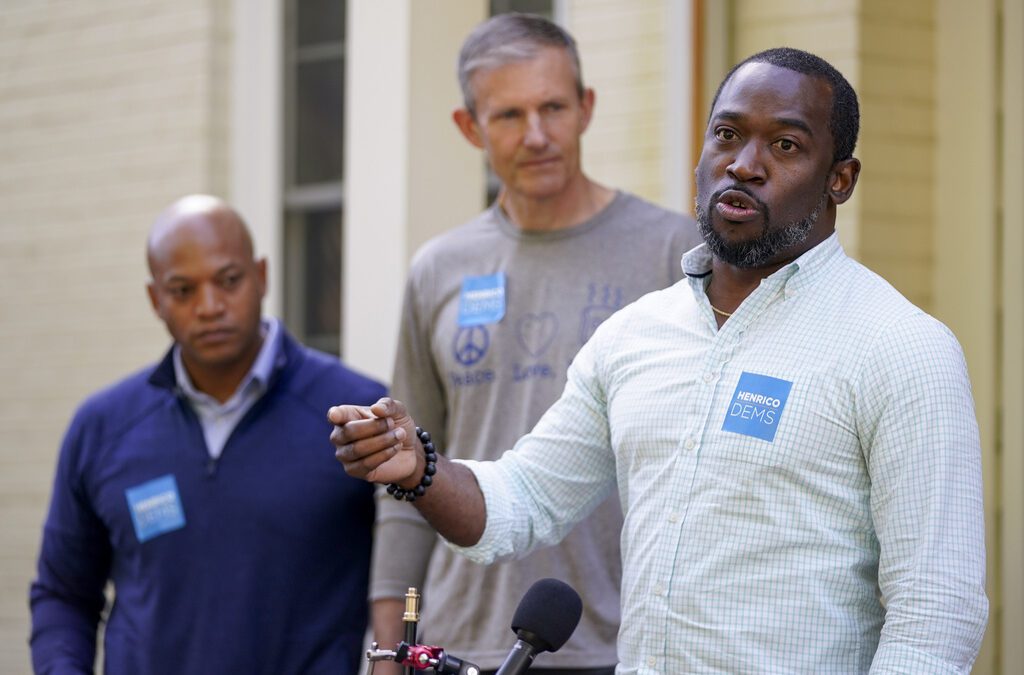Check out the rest of our series on how Virginia laws affect women here.
We’ve explored how women are hurt by Virginia’s low minimum wage, lack of paid leave and the gender wage gap, and one result of Virginia’s failures to rectify those issues is that women experience poverty at a higher rate than men.
More than 11% of women in Virginia live below the poverty line, compared to 8.9% of men, according to a 2018 report from TalkPoverty, a project from the Center for American Progress.
With so many Virginia women living in poverty, the effects filter down to their children. Virginia has a 13.7% child poverty rate, with 307,000 black and Hispanic children living in families with incomes under 200% of the federal poverty level, about $60,000 for a family of three.
Armed with these numbers, Democrats in Virginia’s General Assembly tried to tackle poverty by passing bills raising the minimum wage, providing paid leave to parents and addressing the gender wage gap, but were blocked at every turn by Republicans.
But there were small victories. The General Assembly agreed to fund a 5% increase to the benefits families receive from the Temporary Assistance for Needy Families program, which provides cash, child-care, transportation and other support for low-income families.
More noteworthy is the state’s Medicaid expansion, which was passed in 2018 with support from every Democrat and just a handful of Republicans. The legislation expanded the state’s Medicaid program to up to 400,000 low-income Virginians.
So far, 290,133 Virginians already signed up for the expanded program and women make up 60%, or 175,203 of the new enrollees. The vast majority of these women live in poverty and many of them were previously unable to afford health insurance.
Virginia’s Medicaid expansion changed that, but it can’t eradicate poverty on its own. That would take other policies, like paying women in Virginia the same as men. If that happened, women’s poverty rate would drop by more than half, according to analysis by the Institute for Women’s Policy Research.
The gender wage gap is also a key driver of female poverty, as women in Virginia make 79 cents for every dollar paid to a man, a yearly pay difference of nearly $12,000 per year, according to the National Partnership for Women & Families.
If Democrats gain control of the General Assembly in this year’s elections or if Republicans begin to support legislation that addresses the wage gap, the state might finally pass a law that addresses female poverty in a meaningful way.
Until then, the disparity will remain.
Politics

Biden administration bans noncompete clauses for workers
The Federal Trade Commission (FTC) voted on Tuesday to ban noncompete agreements—those pesky clauses that employers often force their workers to...

Democratic shakeup in Virginia primaries for governor, lieutenant governor
Richmond Mayor Levar Stoney quit his bid for governor and jumped into the race to be the Democratic nominee for lieutenant governor. The race for...
Local News

The zodiac signs of 12 iconic women offer insight into their historic accomplishments
Zodiac signs can tell you a lot about someone’s personality. Whether they’re an earth, water, air, or fire sign, these 12 categories (which are...

Virginia verses: Celebrating 5 poetic icons for National Poetry Month
There’s no shortage of great writers when it comes to our commonwealth. From the haunting verses of Edgar Allan Poe, who found solace in Richmond's...





